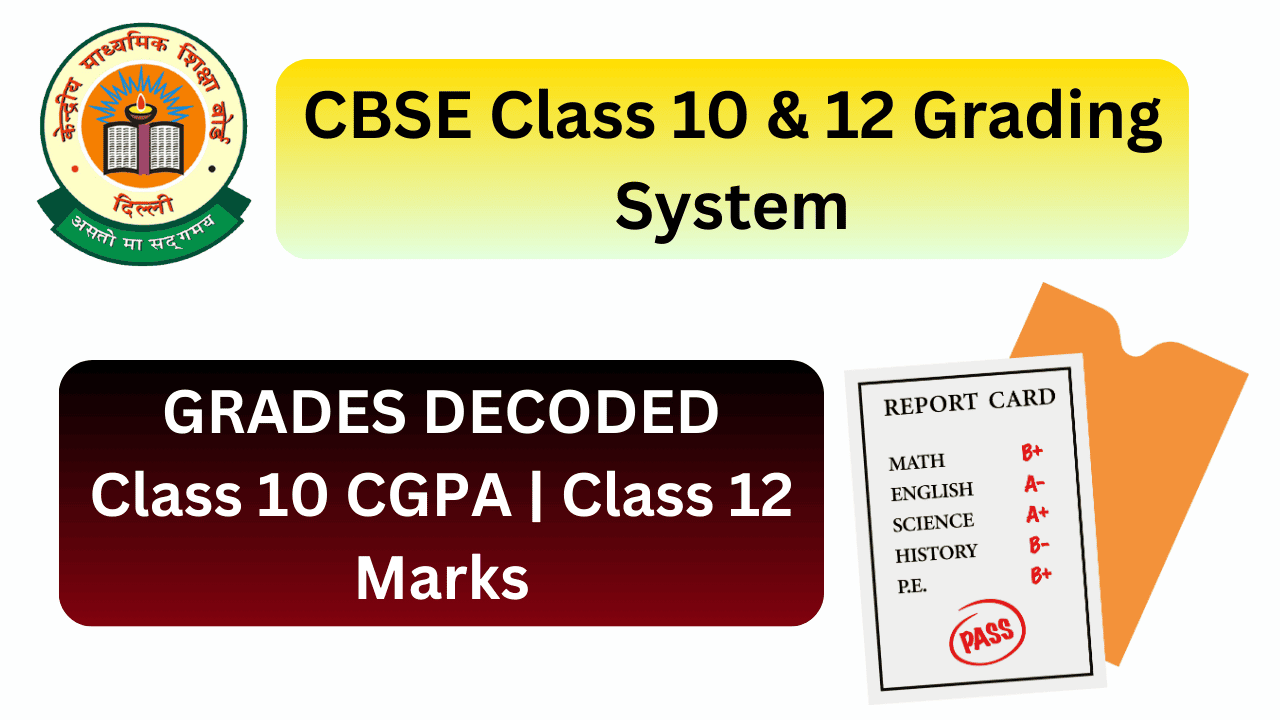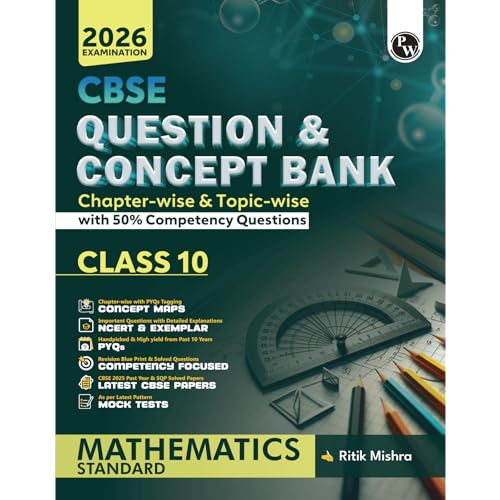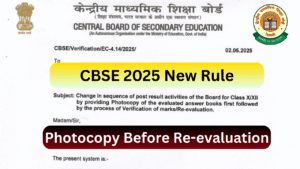Hey, CBSE students and parents! The Central Board of Secondary Education (CBSE) uses a 9-point grading system to rank your performance, and understanding it is important to planning your next steps. Whether you’re a Class 10 student eyeing a stream or a Class 12 student aiming for college, read this article till the end to understand CBSE Grading System, CGPA, Percentages, and more.
What Is the CBSE 9-Point Grading System?
CBSE’s 9-point grading system evaluates Class 10 (scholastic subjects) and Class 12 (elective subjects) students based on their rank among all passed candidates, not just raw marks. The board divides passers into eight equal octiles (1/8th segments), assigning grades from A1 (top performers) to D2 (lowest passers). An E* grade means you didn’t pass and may need a supplementary exam. This system applies to the entire syllabus, ensuring a fair, relative ranking.
Here’s the grading structure with approximate mark ranges:
| Grade | Description | Marks Range (Approx.) | Grade Point |
|---|---|---|---|
| A-1 | Top 1/8th of passed candidates | 91–100 | 10 |
| A-2 | Next 1/8th of passed candidates | 81–90 | 9 |
| B-1 | Next 1/8th of passed candidates | 71–80 | 8 |
| B-2 | Next 1/8th of passed candidates | 61–70 | 7 |
| C-1 | Next 1/8th of passed candidates | 51–60 | 6 |
| C-2 | Next 1/8th of passed candidates | 41–50 | 5 |
| D-1 | Next 1/8th of passed candidates | 33–40 | 4 |
| D-2 | Next 1/8th of passed candidates | 21–32 | Not applicable |
| E* | Essential Repeat (Fail) | Below 33 | Not applicable |
Key Notes:
- Relative Ranking: Grades depend on how you stack up against other passers, not fixed mark cutoffs. Mark ranges are approximate and can vary slightly year to year.
- Passing Criteria: You need at least 33% marks in each subject (theory + practical + internal assessments) and overall to pass. Subjects with practicals require 33% separately in both components.
- Grace Marks: If you’re 1–2 marks short, CBSE may award grace marks to help you pass.
Class 10: How CGPA Shapes Your Future
For Class 10, the 9-point grading system applies to all scholastic subjects (e.g., Math, Science, English). Your grades translate into a Cumulative Grade Point Average (CGPA), which plays a big role in choosing your Class 11 stream (Science, Commerce, or Arts).
How CGPA Is Calculated
- Each subject gets a grade (e.g., A1 = 10 points, B1 = 8 points).
- Add the grade points of your five main subjects (e.g., Math, Science, English, Social Science, and one additional subject).
- Divide the total by 5 to get your CGPA.
Example:
- Math: A1 (10 points)
- Science: A2 (9 points)
- English: B1 (8 points)
- Social Science: A2 (9 points)
- Hindi: B2 (7 points)
- Total: 10 + 9 + 8 + 9 + 7 = 43
- CGPA: 43 ÷ 5 = 8.6
CGPA to Percentage (If Needed)
To estimate your percentage (e.g., for school or stream eligibility):
- Multiply CGPA by 9.5 (a CBSE approximation).
- Example: 8.6 × 9.5 = 81.7%.
Why CGPA Matters
- Stream Selection: Schools often set CGPA cutoffs for streams (e.g., Science may require CGPA ≥ 8.0 or A1 in Math/Science).
- Confidence Boost: A strong CGPA (e.g., 9.0+) opens doors to competitive streams and scholarships.
- Co-Scholastic Areas: Subjects like Art Education use a 5-point scale (A–E), which don’t affect CGPA but reflect holistic development.
Class 12: Why Marks Matter More
For Class 12, the 9-point grading system applies to elective subjects, but colleges and entrance exams focus on your raw marks and percentage. Here’s why:
- College Admissions: Universities like Delhi University or IITs (via JEE) require specific percentages, not grades. For example, DU’s 2024 cutoffs for top courses hit 98–99% for some colleges.
- Entrance Exams: Exams like CUET 2025, NEET, or JEE use Class 12 marks for eligibility (e.g., 50% aggregate for general category in NEET).
- Grading Context: Grades (e.g., A1, B2) show your rank but are less critical than marks for competitive applications.
What If You’re Not Happy with Your Grades?
If your grades or marks seem off, CBSE’s new post-result process for 2025 gives you more control:
- Get a Photocopy of Your Answer Book: Apply in May–June 2025 (~INR 700 per sheet) to review your evaluated answers.
- Decide Next Steps: Based on the photocopy, choose:
- Verification of Marks: ~INR 500 per subject to check for totaling errors or unmarked questions.
- Re-evaluation: ~INR 100 per question to re-check specific answers, refundable if upheld.
- Timeline: Results of verification/re-evaluation are expected by late June 2025.
FAQs on Grades, Disputes, and Supplementary Exams
My CGPA is 7.5. Can I get into the Science stream?
It depends on your school’s cutoff, but a CGPA of 7.5 (around 71.25%) may qualify for Science if you have strong grades (e.g., A2 or B1) in Math and Science. Check with your school counselor.
I got a D2 in one subject. Did I pass?
Yes, D2 (21–32 marks) is a passing grade, but it’s low. You’ve cleared the subject, so no supplementary exam is needed.
I got an E in Math. What now?
An E* means you scored below 33% and didn’t pass. You can take a supplementary exam in July 2025 (tentative: July 15–22), with results in August. Failing one or two subjects qualifies; more than two means repeating the year.
How do I dispute my grades?
Use CBSE’s new process: First, get a photocopy of your answer book (INR 700). If you spot errors, apply for verification (INR 500) or re-evaluation (~INR 100 per question). Apply in May–June 2025 via cbse.gov.in.
Why are my Class 12 grades less important than marks?
Colleges and entrance exams like CUET or JEE prioritize your percentage (calculated from raw marks). Grades show your rank but don’t affect admission cutoffs.














